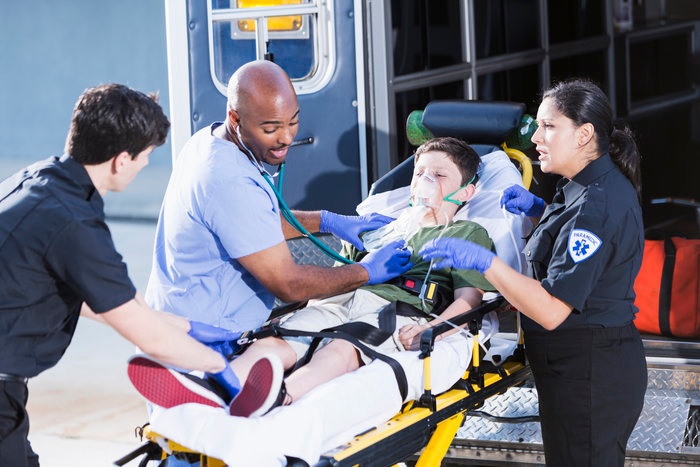
Let’s face it: Pediatric patients make even the most seasoned paramedics a bit nervous. Because adults make up the majority of EMS patients, when that little one comes along, it can produce anxiety even among the most experienced medics. And when the child is having trouble breathing, your unease can go through the roof.
So let’s focus on one of your most integral skills when treating pediatrics: early recognition of respiratory insufficiency.
A distressed child doesn’t respond like an adult would in the same situation. Adults are able to communicate their distress, whereas children tend to shut down. They become frightened and may shrink from caregivers, which compounds their anxiety as their breathing becomes more difficult. Every second counts, so you must be able to assess these small patients rapidly yet thoroughly.
Distress vs. Failure
We’ve already covered the anatomical differences of pediatrics, so today, let’s discuss your approach to assessing children in respiratory distress. The key is to recognize the signs. But first, let’s review the difference between respiratory distress and respiratory failure.
- Respiratory distress is characterized by an increased work of breathing. At this point, the child is getting enough oxygen—therefore, his or her general appearance may be normal—but he or she will exhibit signs of increased work, such as:
- Use of accessory muscles
- Increased respiratory rate
- Retractions (intercostal, supraclavicular, suprasternal)
- Nasal flaring
Quick action on your part can prevent the child from slipping into the next phase, that of respiratory failure.
- Respiratory failure occurs when the extra work of distress has caused the child to exhaust his or her energy reserves. At this point, he or she can no longer maintain adequate oxygenation and ventilation. Signs of impending failure include:
- Decreased level of consciousness
- Agitation or lethargy
- Slow or agonal respirations
- Associated bradycardia
- Grunting
Time is of the essence! Without immediate treatment, your patient’s next phase is complete arrest.
Underlying Causes
Now that we’ve reviewed the difference between distress and failure let’s discuss some of the underlying causes of respiratory insufficiency in children. According to the American Academy of Pediatrics, these underlying causes can be broken down into five general categories:
- Obstruction of the airway – secondary to conditions such as asthma, croup, bronchiolitis, and a foreign body
- Restriction of the chest-wall movement – secondary to injury (such as blunt trauma) or conditions such as severe scoliosis (side-to-side curvature of the spine) or kyphosis (forward curvature of the spine, commonly called “humpback”)
- Chest-wall muscle fatigue – as seen during ongoing respiratory distress or from conditions such as muscular dystrophy (a genetic disorder that causes generalized muscle weakness)
- Decreases in central respiratory drive – commonly caused by head injury or intoxication
- Chest injuries – such as rib fractures, pulmonary contusions, and pneumothorax
Have a Plan!
When treating children in respiratory distress or failure, there’s no time to think about what you need to do. You must treat aggressively, with confidence and decisiveness. Here are a few reminders:
- If a child presents with an altered appearance in the presence of significantly increased or decreased work of breathing, think respiratory failure.
- Remember that bradycardia, poor air movement, and low oxygen saturation are always key findings
- If your patient is in respiratory failure (or arrest), begin assisting with a bag mask immediately at an age-appropriate rate!
Recognizing the signs and having a plan will result in rapid, life-saving treatment for children experiencing a respiratory emergency.
Portable suction saves lives, ensuring that you can intervene in pediatric respiratory emergencies quickly. For assistance buying the right emergency equipment, download our free guide, The Ultimate Guide to Purchasing a Portable Emergency Suction Device.
Editor's Note: This blog was originally published in October, 2016. It has been re-published with additional up to date content.















